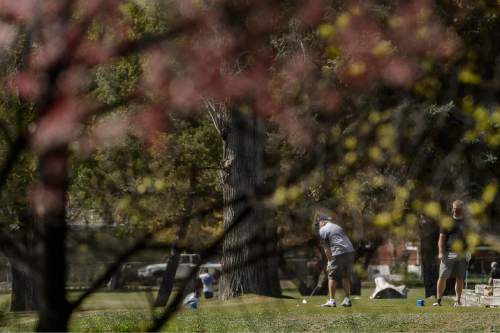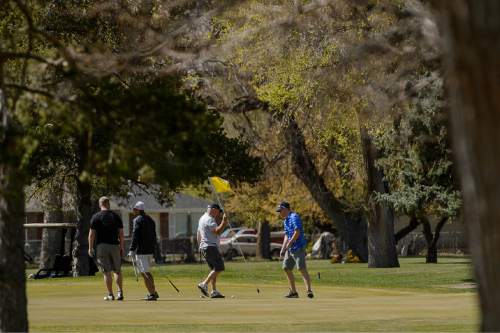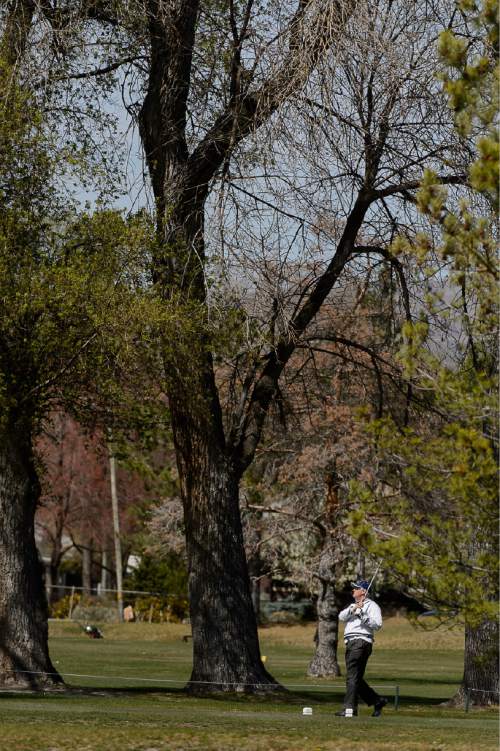This is an archived article that was published on sltrib.com in 2016, and information in the article may be outdated. It is provided only for personal research purposes and may not be reprinted.
While Salt Lake City's latest fiscal plan for its golf courses comes close to breaking even, officials warn that several long-term challenges persist.
The City Council saw details last week of a new $7.97 million budget for the city's golf enterprise fund for the next fiscal year, which ends in June 2017. It is the first set of financials to exclude revenues and expenses from Wingpointe, which was closed in November and is being transferred to the city's Department of Airports.
Altogether, the new golf budget would yield a modest surplus of $16,199 after years of deficits reaching as high as $1 million.
"The bottom line is, we're increasing revenues," said city golf program business manager Matt Kammeyer, adding that the sport "is in a very healthy state."
Reflecting that optimism, managers predict the number of rounds played on city courses will rise from an estimated 339,250 nine-hole equivalents this fiscal year to 386,500 next year — nearly a 14 percent jump.
The city also is completing nearly $1.2 million in course improvements, including a new driving range at Bonneville; new restrooms at Forest Dale and Nibley Park; clubhouse renovations and a patio deck extension at Mountain Dell; along with bunker improvements and tee additions at Rose Park.
Council members are reviewing golf and other city spending in advance of public hearings and final budget approval in June.
With the city now running six courses, officials project operational losses in the golf fund of $6,029 for 2017 — dramatically lower than the $592,087 operating deficit in the current fiscal year. A separate fund for golf-related capital improvements will close the coming year with a $22,228 surplus. That account lost $774,350 the year before.
In a budget note to the council, Mayor Jackie Biskupski acknowledges that the latest spending plan — the first of her administration — doesn't fully address golf fund deficits in prior years, something she pledges to do in fiscal year 2018.
The 2017 financial plan envisions Bonneville, Forest Dale, Glendale and Mountain Dell making money and Nibley and Rose Park running deficits of $17,055 and $111,651, respectively.
The plan includes a budget-neutral $61,417 transfer of money to airport officials to maintain Wingpointe while they consider how they might run it if it reopens.
According to Lisa Shaffer, interim director of the Department of Public Services, several new strategies for boosting golf revenues and lowering expenses have been in place since January, with positive results.
Course managers now vary what they charge for green fees based on demand, using lower prices to draw more customers in off-peak hours. "It's better to make some money as opposed to no money in the low-demand times," Shaffer told the council.
Based on less than five months of demand-based pricing, the new golf budget assumes nearly $388,500 more in annual revenues — a number Shaffer cautioned is a projection.
Managers hope to raise revenues another $40,000 a year with new pricing and promotional campaigns for annual passes, including the creation of new two-course passes for Glendale-Rose Park and Forest Dale-Nibley.
Golf managers propose a 50-cent hike in rental fees on carts, the first increase in 10 years. The price hike is expected to generate $89,206 over a full year. All the city courses, except Nibley, have newly purchased cart fleets, and some council members are pressing for a larger price hike to better cover those costs.
The city continues to seek cheaper sources of water to keep its courses green. Secondary water projects at Rose Park and Glendale, along with an improved irrigation system at Bonneville, already have saved $382,819, but because those capital projects also boost debt, the overall budget impact is mixed.
tsemerad@sltrib.com Twitter: @TonySemerad









